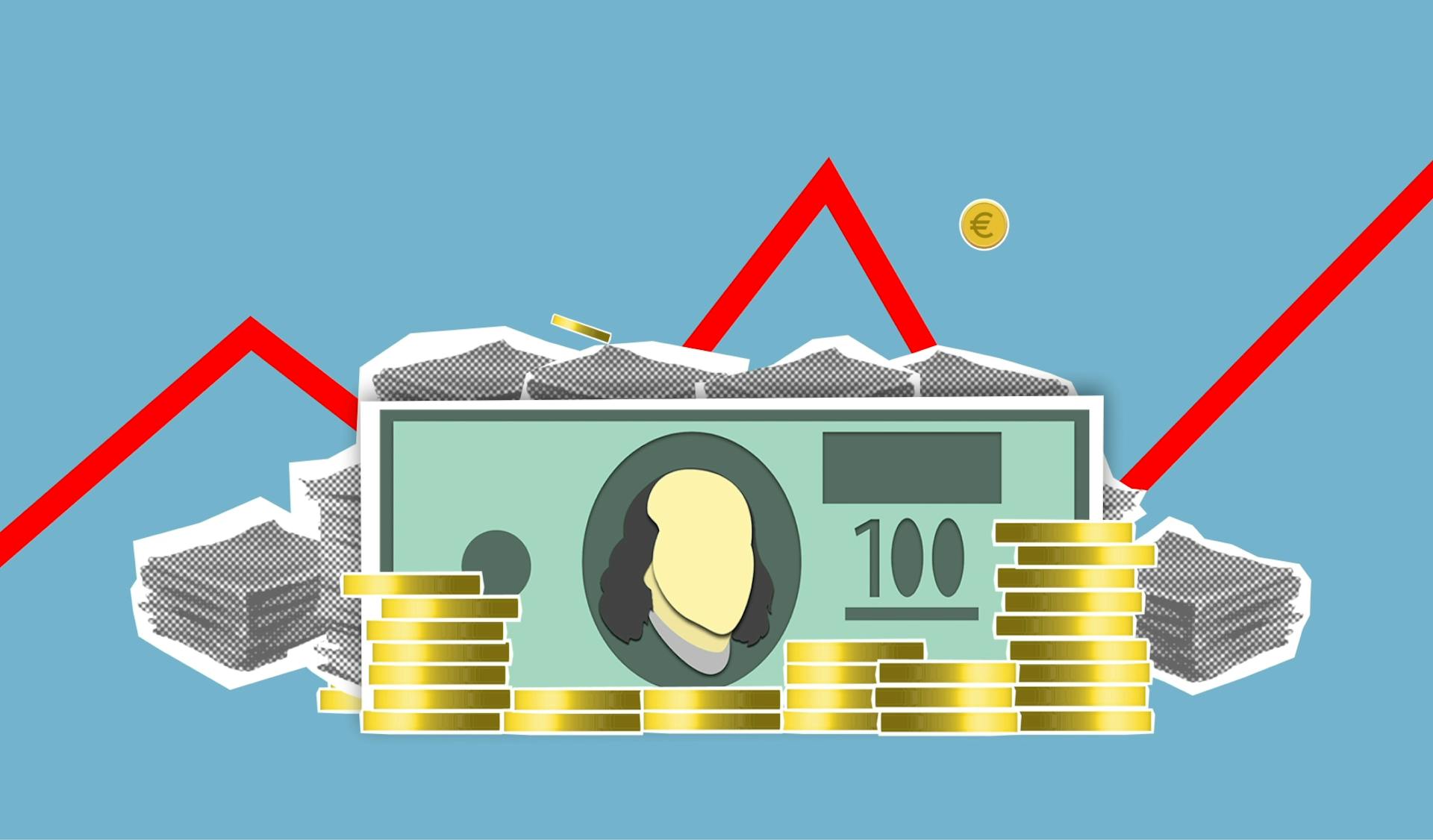
Employee stock purchase plans (ESPPs) can be a great way to give employees a stake in the company's success, but they also come with some tax implications. You'll need to pay capital gains tax on the difference between the purchase price and the sale price of the stock.
The good news is that you may be able to take advantage of a lower tax rate if you hold the stock for a certain amount of time. Typically, this is two years from the date of purchase and one year from the date of vesting.
The tax treatment of ESPPs can be complex, but it's worth understanding to make the most of this benefit.
See what others are reading: Espp Plans
What is an Employee Stock Purchase Plan (ESPP)?
An Employee Stock Purchase Plan (ESPP) is an offering that allows employees to purchase stock in their company at a discount as an after-tax payroll deduction.
Employees must enroll in the plan to participate, and there are open enrollment periods, also known as offering periods, most often every six months.
Curious to learn more? Check out: Venture Capital Action Plan
The Internal Revenue Service allows employees to contribute up to a maximum of $25,000 per year towards the purchase of company stock, although some employers may have a lower limit.
Contributions are withheld from your paycheck (payroll deductions), just as they would for many other benefits, but the deducted funds aren't used to purchase shares immediately.
Here are the key details about ESPP contributions:
- Maximum annual contribution: $25,000 (or lower limit set by employer)
- Contributions are after-tax
- Contributions are withheld from paycheck (payroll deductions)
- Funds are held by employer until purchase date
The discount can be as high as 15%, which is the maximum allowed by the IRS, and some companies offer a matching contribution to the plan in lieu of a discount.
The share price and discount are calculated twice; once when the enrollment period begins and again when the employee actually buys shares, and the employee pays whichever amount is less.
Taxes
Taxes play a crucial role in employee stock purchase plans (ESPPs). The tax implications of an ESPP depend on whether the company plan is qualified or non-qualified.
Explore further: Non Qualified Deferred Comp Taxation
If your ESPP is qualified, you won't pay taxes on the benefit (the discount on the stock) when you purchase the shares. However, you'll pay taxes when you sell the shares, which may be taxed as capital gains or ordinary income depending on your holding period.
Tax-qualified ESPPs have a two-year/one-year rule: if you sell your shares more than two years after the grant date and more than one year after you first acquired the shares, it's a qualifying disposition. If you don't meet this rule, it's a disqualifying disposition, which affects the tax treatment.
The tax benefits of a qualified ESPP can be maximized if you hold the investment for at least 18 months.
Here are some key tax considerations for ESPPs:
- Tax-qualified ESPPs have a two-year/one-year rule.
- Disqualifying dispositions result in different tax treatment.
- The tax benefits of a qualified ESPP can be maximized if you hold the investment for at least 18 months.
Non-qualified ESPPs, on the other hand, are taxed differently. The difference between the amount you pay for the stock and the fair market value is taxed at the prevailing rate when you purchase the shares.
The tax implications of selling ESPP stock are complex and can be difficult to navigate. The good news is that there is no tax due when you buy shares at the end of each purchase period. However, determining what happens when you sell is a bit trickier.
You might like: How Can I Buy Penny Stocks Online
To make the most of your ESPP, it's essential to understand the tax implications of selling ESPP stock. This includes considering the two-year/one-year rule and the potential for capital gains or ordinary income.
By understanding the tax implications of your ESPP, you can make informed decisions about when to sell your shares and minimize your tax liability.
Here's a summary of the tax considerations for ESPPs:
Keep in mind that tax laws and regulations can change, so it's essential to consult with a tax professional to ensure you're meeting your tax obligations and taking advantage of available tax benefits.
Types of ESPP Plans
There are two main types of ESPP plans: non-qualified and qualified. Non-qualified ESPPs are subject to taxation both at the time of acquisition and again upon sale, with the proceeds from the sale of shares acquired via a non-qualified ESPP subject to ordinary income taxes at purchase and capital gains or losses upon sale.
Readers also liked: Taxes on Sale of Business S Corp
The key difference between non-qualified and qualified ESPPs is the deferral of the regular income element until the stock options are sold. Qualified ESPPs are more sophisticated and offer this deferral, whereas non-qualified plans do not.
Here's a comparison of the two types of ESPP plans:
What's the Plan?
So, you're interested in learning more about the different types of Employee Stock Purchase Plans (ESPPs). Let's break it down.
Most employers have open enrollment periods every six months, which is when you can enroll in the plan to participate. Contributions are withheld from your paycheck, just like other benefits.
The maximum amount you can contribute to an ESPP is $25,000 per year, although some employers may have a lower limit.
Your employer will use your accumulated funds to purchase shares of your company's stock on a specified purchase date, typically at a discount. This discount can be as high as 15%, which is the maximum allowed by the IRS.
Some companies offer a matching contribution to the plan in lieu of a discount. The share price and discount are calculated twice; once when the enrollment period begins and again when you actually buy shares. You pay whichever amount is less.
Here's a quick rundown of how the discount works:
As you can see, the discount can really add up.
What Are Plans?
An employee stock purchase plan (ESPP) is an elective benefit that allows employees to purchase company stock at a discount. This benefit is typically offered every six months, with a maximum annual contribution limit of $25,000.
The discount offered by ESPPs can be as high as 15%, which is the maximum allowed by the IRS. Some companies offer a matching contribution to the plan in lieu of a discount.
ESPPs are designed to help employees purchase company stock at a lower price, with the goal of potentially earning a profit if the stock's value increases. If you sell the shares immediately, you'll owe taxes on any gains.
You might enjoy: Restricted Stock Plan
The share price and discount are calculated twice: once when you enroll in the plan and again when you actually buy shares. This is called a look-back provision, which is unique to ESPPs. You pay whichever amount is less.
Here's an example of how this works:
In both scenarios, you're able to purchase shares at a lower price than the current market value. However, if you retain the shares and their value falls, you may end up with a loss.
Here's an interesting read: Represents the Shares Issued at Par Value
Types of Plans
There are two main types of ESPPs: Qualified and Non-Qualified.
A Qualified ESPP defers the regular income element until the stock options are sold, whereas a Non-Qualified ESPP subjects the shares acquired to taxation both at the time of acquisition and again upon sale.
Here's a breakdown of the key differences between the two:
As you can see, the main distinction between Qualified and Non-Qualified ESPPs lies in their tax treatment. It's essential to understand which type your employer offers to make informed decisions about your participation in the plan.
Tax Planning Considerations
To get the most out of your ESPP, you need to understand the tax implications of selling ESPP stock. The tax implications of selling ESPP stock are complex and can be difficult to navigate.
You won't have to pay taxes when you buy shares at the end of each purchase period. However, determining what happens when you sell is a bit trickier.
A qualifying disposition occurs when you sell stock more than 24 months after the offering date and more than 12 months after the shares are purchased. This is in accordance with the two-year/one-year rule mentioned in Example 4.
If you sell your ESPP stock within two years of the offering date or one year of purchasing the shares, it's considered a disqualifying disposition. This means you'll have to pay taxes on the difference between the market value and the purchase price, in addition to any capital gains or losses.
See what others are reading: Warren Buffet Selling Stock Bofa
Holding your ESPP for at least 18 months can result in the most favorable tax treatment compared to other timelines.
Here's a summary of the tax implications of selling ESPP stock:
It's essential to note that the tax benefits of an ESPP may be maximized if the investment is held for a minimum of 18 months, as mentioned in Example 5.
You should also be aware that selling shares acquired via a non-qualified ESPP are subject to taxation both at the time of acquisition and again upon sale, as stated in Example 3.
Understanding the tax implications of selling ESPP stock can help you make informed investment decisions and avoid surprise tax bills.
Here's an interesting read: Qualifying Investor Alternative Investment Fund
Benefits and Advantages of ESPP
An Employee Stock Purchase Plan (ESPP) offers a company several benefits, including higher levels of productivity in the workplace, as employees feel a sense of ownership and are more invested in the company's success.
This sense of ownership is established through the ESPP, which allows employees to purchase company stock at a discounted price, typically up to 15% below market value.
The ESPP is a wide, international benefit that can be offered by companies, and it creates a reliable source of revenue for the business.
One of the main benefits of having an ESPP is that you can purchase company stock up to 15% less than other investors.
Here are some key benefits of an ESPP:
- Purchasing company stock at a discounted price
- Ability to build wealth and quickly achieve personal financial goals
- No income tax is owed on the difference between the discounted purchase price and the fair market value of company stock on the date of purchase until the stock is sold
What Are the Benefits of?
The benefits of an Employee Stock Purchase Plan (ESPP) are numerous and exciting. One of the main benefits is that you can purchase company stock up to 15% less than other investors.
This discount can make a big difference in your investment, especially if the stock price increases over time. For example, if you purchase stock at a 15% discount, you could end up with a significant profit when you sell it.
Another benefit of an ESPP is that it creates a reliable source of revenue for the business. This can be a win-win for both you and the company.
On a similar theme: Stock Options Employee Benefit
Here are some of the key benefits of an ESPP:
- Higher levels of productivity in the workplace
- Establish a sense of company-wide ownership
- Reduces costs compared to other forms of equity compensation
- Boosts the savings of employees
Additionally, the lookback provision in most ESPPs allows you to purchase stock at a lower price, which can lead to a higher discount. For instance, if the current stock price is higher than it was at the beginning of your offering period, your actual discount to fair market value could far exceed 15%.
With an ESPP, you also have the flexibility to decide when to sell your stock and pay taxes. This can be a big advantage, especially if you're looking to fund short-term goals or lock in profits from the discount.
Read: The Untold Advantages of Your Plan
You can purchase company stock up to 15% less than other investors, thanks to the discount offered by ESPPs.
The IRS limit for ESPP contributions is $25,000 per calendar year, but some companies may have a lower limit. Your contributions are withheld from your paycheck, and the funds are held by the employer until a specified purchase date.
Most ESPPs come with a lookback provision, which allows the discount to be applied to either the current stock price or a historical stock price from a specified date in the past. This can result in a discount far exceeding 15% if the current price is higher than the historical price.
Companies can further restrict contributions, with the cap usually ranging from 10% to 15% of your salary. Your contribution is based on your pre-tax salary, not your take-home pay, so it's essential to consider the impact on your cash flow.
To get the most out of your ESPP, it's crucial to understand the tax implications of selling the stock. You may owe taxes on any gains, and the tax benefits of an ESPP can be maximized if the investment is held for a minimum of 18 months.
Here are some key things to keep in mind when considering an ESPP:
- Contributions are withheld from your paycheck and held by the employer until a specified purchase date.
- Most ESPPs come with a lookback provision, which can result in a discount far exceeding 15%.
- Companies can further restrict contributions, with the cap usually ranging from 10% to 15% of your salary.
- Your contribution is based on your pre-tax salary, not your take-home pay.
- You may owe taxes on any gains when selling the stock.
- The tax benefits of an ESPP can be maximized if the investment is held for a minimum of 18 months.
Frequently Asked Questions
Do you pay capital gains on ESOP?
Yes, you pay capital gains tax on ESOP distributions when the stock is sold, in addition to ordinary income tax on employer contributions. This tax applies to the appreciation in stock value, not the initial stock value.
How to avoid getting double taxed on employee stock purchase plan?
To avoid double taxation on an ESPP, accurately report both the discount as ordinary income and any additional gain as a capital gain on your tax return. This ensures you're not paying taxes twice on the same income.
Sources
- https://www.oysterhr.com/glossary/employee-stock-purchase-plan
- https://maaplanning.com/tricks-of-the-trade/employee-stock-purchase-programs-espp
- https://eqvista.com/esop/employee-stock-purchase-plans-taxation/
- https://facet.com/equity/how-do-employee-stock-purchase-plans-work/
- https://www.plancorp.com/employee-stock-purchase-plans-101
Featured Images: pexels.com


